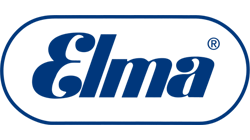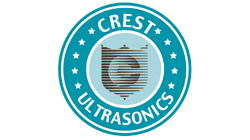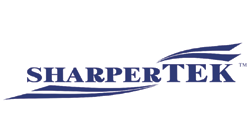Ultrasonic Cleaning - An In-Depth Look
|
Let Us Help We can help you
find the perfect storage unit for your needs and budget. |
Ultrasonic cleaning is accepted as an excellent method to remove contaminants from all kinds of surfaces. Ultrasonic cleaning works in automotive service bays, aircraft engine maintenance facilities, hospitals, medical and dental offices and other applications featured in our blog posts. Here you'll learn how ultrasonic cleaning works and find tips on selecting equipment meeting your requirements.
How does Ultrasonic Cleaning Work?
"Ultrasonic" is defined as a sound frequency above the range of human hearing -- limited at about 20,000 cycles per second or 20 kilohertz (KHz). These equate to vibrations that in this case translate to ultrasonic cleaning energy.
When applied to cleaning products, ultrasonic cleaning energy creates billions of micron-sized vacuum bubbles in a cleaning solution. We'll cover ultrasonic cleaning solutions later in this post.
The bubbles are created by transducers bonded to the bottom (and/or sides) of a stainless steel ultrasonic cleaning tank. The transducers are excited by generators designed to deliver an ultrasonic frequency such as 37 kHz.
This causes the tank bottom (and/or sides) to act as a vibrating membrane.
Vibrations produce those micron-sized bubbles pulsating through the solution and imploding. This creates a powerful jet of cleaning solution against what is being cleaned to blast loose and carry away contaminants from all wetted surfaces.
What to Look for in Ultrasonic Cleaning Equipment
In addition to the cleaning tank and generator, basic ultrasonic cleaners have an on-off button. Large units are equipped with a drain. Depending on your requirements other decisions must be made.
1. Ultrasonic Cleaning Equipment Size
The parts you plan to clean will govern the size of your ultrasonic cleaner – in this case both the dimensions of the cleaning tank and the amount of cleaning solution required for the job.
Fortunately ultrasonic cleaners available from iUltrasonic come in a variety of sizes and tank shapes from small benchtop to large industrial sized units. This assures you that there is a model ideally suited for your cleaning projects.
When considering size take into account the size of parts being cleaned and that cleaning is usually accomplished in baskets.
Baskets are designed to fit into the tank, meaning their dimensions are somewhat less than tank dimensions in terms of length, width and depth. Baskets assure parts will not contact the sides or bottom of the cleaning tank.
Exceptions to the basket criterion are suspending parts in the solution and tanks equipped with bottom support racks.
2. Ultrasonic Cleaner "Working Depth"
Parts being cleaned must be completely immersed in the ultrasonic cleaning solution. You’ll need to know the working depth of the tank, or the distance between the cleaning basket bottom and the surface of the cleaning solution. If this detail is not clear from the manual, ask the manufacturer.
3. For Very Small Parts Use Mesh Baskets
Finally, if you clean extremely small parts you’ll want to investigate fine mesh baskets that can be positioned in regular baskets. Another option is to put these parts in beakers along with the cleaning solution then place the beakers in the basket. Cavitation passes through the glass beaker wall to act on the small parts.
Check out our ultrasonic cleaning learning center video for additional info.
Six Features Contributing to Ultrasonic Cleaning Efficiency
In addition to the on-off switch, manufacturers offer models with added features contributing to cleaning efficiency and throughput. Here are 6 examples of options that you can consider:
1. Timers
The cleaning cycle can be controlled by timers that will turn off the ultrasound at the end of the cycle. This allows you to attend to other tasks during the cleaning cycle.
2. Temperature Control
In certain cases cleaning efficiently is increased at higher temperatures. Thermostatically controlled heaters bring the solution to the recommended temperature. Some units are designed to activate the ultrasound when the set temperature in reached. Note, however, that ultrasonic energy itself will warm cleaning solutions.
3. A "Degas" Mode
Freshly prepared ultrasonic cleaning solutions contain trapped air that inhibits cavitation action. A degas mode drives off air faster than by operating the equipment without a load, and saves time when cleaning in larger tanks.
4. A "Pulse" Mode
Stubborn deposits of contaminants can be removed faster if units are equipped with a pulse mode that delivers bursts of higher ultrasonic power. Pulse also helps degas cleaning solutions.
5. A "Sweep" Mode
Uniform cleaning throughout the bath is achieved when the unit has a sweep mode that provides a slight ± variation in ultrasonic frequency.
Without sweep there are three potential problems: ‘hot spots’ or areas with a high concentration of cavitation that can damage sensitive surfaces, ‘dead zones’ or no cavitation, and 'harmonic vibrations'. The latter causes parts to resonate. This can damage sensitive components such as fine wires, printed circuit boards or crystals.
6. Adjustable Power
When cleaning involves a variety of products with varying conditions of contamination consider equipment offering adjustable power for faster, more effective results. Keep in mind that too much power can damage sensitive or highly polished surfaces. Therefore more power is not always better.
Selecting Ultrasonic Cleaning Frequencies
Ultrasonic cleaners are manufactured to operate at specific frequencies. Models operating at 37 or 45 kHz are widely used for most cleaning applications; other models operate at 25, 80, and 130 kHz. Certain models can operate at dual frequencies.
While you would be hard pressed to see the difference, cavitation bubbles produced at low frequencies are larger than those produced at high frequencies.
Low frequency bubbles implode more violently than high frequency bubbles.
Because of this, cleaners operating at 25 kHz are popular choices when cleaning highly soiled fabricated and cast metal parts. Softer materials and those with highly polished surfaces are cleaned at higher frequencies.
The smaller bubbles produced at 80 or 130 kHz are also more effective when cleaning parts characterized by cracks, crevices, blind and machined holes. This is because the smaller bubbles are better able to penetrate hard to reach areas.
Examples of dual-frequency ultrasonic cleaners operate at user-selected 37/80, 25/45 and 35/130 kHz when cleaning a variety of products with differing characteristics.
Ultrasonic Cleaning Solution Options
Two key points apply when selecting an ultrasonic cleaning solution formulation: the parts being cleaned and the nature of contaminants being removed.
Common to most formulations is that they are biodegradable. This eases disposal concerns. But always check with local authorities to avoid problems.
Here are a few examples:
- An akaline cleaners such as elma tec clean A4 is a universal cleaner/degreaser for all types of metals and most plastics, and is widely used for cleaning automotive parts such as carburetors.
- Alkaline elma tec clean A1 is a free-rinsing formulation preferred for applications where the parts must be rinsed free of any chemical residue after cleaning. This includes cleaning optics and electronics, especially printed circuit boards.
- Acidic ultrasonic cleaning concentrates such as elma tec clean S1 are used for removing corrosion, oxidation, minerals and rust.
- Neutral elma tec clean N1 is a phosphate-free emulsifying cleaning concentrate for gentle cleaning action. It is used for the treatment of highly sensitive pieces.
- MedClean C7 removes blood, tissue, ointments and bodily excretions from medical and surgical instruments.
- Fine cleaning aluminum and light metal alloys, glass, ceramic, mineral and plastic surfaces is accomplished with EC 260 d&s neutral foam-inhibited concentrate.
For a fuller description of these and other formulations visit our pages on cleaning solution chemicals.
Correctly Mixing Ultrasonic Cleaning Solutions
Ultrasonic cleaners are designed to hold a specific level of cleaning solution. Neither overfilling nor under filling contributes to the cleaning process, and under filling may damage the unit. The correct amount is generally indicated by a fill line or some other method.
Because parts being cleaned displace solution we suggest the following procedure when preparing the solution.
- Add water until the tank is half full
- Add the correct amount of cleaning solution concentrate for a full tank. Dilution instructions are shipped with the concentrate.
- Add water to the fill line and activate the ultrasound and/or degas mode to mix and degas the solution.
Draw off and set aside solution that will be displaced by parts being cleaned. When these are immersed the solution level should return to the fill line. Or add enough drawn off solution to make it so. You’re ready to clean.
A related term is called the service volume, which is the minimum amount of solution that can be safely mixed and degassed. It can be useful when accommodating for displacement rather than mixing and degassing a filled tank then drawing off the excess. The service volume should be indicated in the manual; if not ask the manufacturer.
The above may seem complicated at first. But as you develop experience you’ll nail down how much fresh solution to prepare based on the products you are cleaning.
Extending Ultrasonic Cleaning Solution Performance
Contaminants removed during ultrasonic cleaning remain in the solution. Those that float to the top should be skimmed off and set aside for later disposal. Spray bars and weirs are available on larger tanks to perform this task. Solid particles that drop to the bottom can be removed by filtering systems available for larger tanks.
But when cleaning effectiveness drops solutions should be replaced. Follow local regulations for proper disposal and take the time to clean the tank following user manual recommendations
Rinsing and Drying Cleaned Parts
If cleaning solution residues are unacceptable consider installing spray stations, rinsing tanks and dryers to your cleaning line. Ask vendors for recommendations.
Sound Advice on Ultrasonic Noise
Ultrasonic cleaners operating at lower frequencies create noise due to tank wall vibrations. Lids (which also reduce evaporation), sound-deadening enclosures and ear protection are ways to reduce annoying ultrasonic noise.
Need more Info on Ultrasonic Cleaning?
Contact the scientists at iUltrasonic more information on selecting and operating ultrasonic cleaning equipment and chemicals that meet your specific cleaning requirements.





